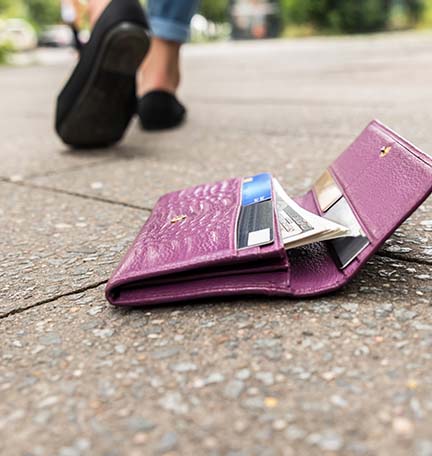You have multiple credit scores. Some are even evolving to better match your needs.
We all know that good credit is key for anybody seeking to buy a home or get a personal loan or credit card. And the recipe for the good credit that earns people attractive terms and interest rates when they borrow money is straightforward: Demonstrate to lenders that you’re not a high-risk borrower by showing you consistently pay your bills and debts on time and avoid the temptation of borrowing too much money.
But when it comes to your credit score, one of the most important things to remember is that you don’t have one score—you have many scores. And the differences between those scores can be confusing.
You’ve likely seen your score as you’ve gone about your financial life. Maybe you were applying for an auto loan and the dealer showed you one score. Maybe your credit card account provides you with another score. If you have downloaded a credit monitoring app on your phone, you could see another. Chances are, when you have seen your score in different places, they are not the same number. That is normal, and not a reason to be concerned.
No single credit score is the industry standard. Because each score relies on different calculations and data, they all may accurately reflect your creditworthiness in various ways.
Why Scores Differ
The traditional credit scores used by many financial institutions to determine whether to make a loan or provide a credit card rely on metrics like your past payment history, what percentage of your total available credit you’re utilizing and the balance you carry. But each credit bureau (and the individual scoring model used by that bureau) pulls that supporting information from different places—and at different times.
There are three primary credit bureaus that provide credit scores. (There are dozens of other scores, too, but there are three big ones.) Each of those bureaus has their own model to calculate scores. Even within each bureau, there are multiple models that may result in different scores. Lenders, like your bank, will rely on various scores depending on the types of products they offer, such as a mortgage, credit card or insurance.
The credit bureaus rely on information that is reported to them and on information they buy. They even share information between themselves. But they parse the information differently. One bureau might see some new information about your use of credit and recalculate its score to reflect a change in your creditworthiness. Another bureau might do the same, but the change in your score could be less drastic because the other bureau doesn’t weight the information the same. The third may use a different metric or could even disregard the information altogether.
Focus on the Ranges, Not Numbers
Instead of focusing too closely on specific scores, you may find it more useful to know where you fall within the various ranges.
Generally speaking, all credit scores fall into categories of poor, fair, good and excellent. Poor scores have lower numbers—usually as low as 300—and excellent scores have higher numbers—as high as 850, usually. But the system is a spectrum, and a so-called excellent score from one provider could fall between 800 and 850 while an excellent score from another provider could fall between 750 and 850.
What Does the CVNA Score Reflect?
Since 2018 Regions has utilized the CreditVision New Account (CVNA) Score to assess credit card applicants as well as those applying for unsecured lines of credit and term loans (unsecured means the loans aren’t backed by collateral).
Regions believes that CVNA scores more accurately reflect the financial situations of applicants for unsecured credit products. “The CVNA score can produce scores for people with relatively newer credit histories,” says Kyle Hayes, Risk Data Science Manager for Regions Bank. “That’s particularly important in the unsecured loan or credit card space because a lot of times it would be the first loan people would get.”
CVNA scores are different, generally, from what you’ll see elsewhere. Developed by the credit bureau TransUnion, CVNA scores consider factors that aren’t included in more traditional credit scores that focus heavily on the length of someone’s credit history. For example, the CVNA score looks at things like the trajectory of a credit account rather than how long someone has had it. “Rather than your current balance, it will show your rate of change,” says Hayes. “Think of it like an arrow pointing up or down in the direction your credit is trending.” The score also considers the duration of balances as well as payment ratios, which measures the amount of credit card debt someone carries compared to the total amount available to them.
Having a lower CVNA Score than what you see in your credit monitoring app, for example, is not necessarily a bad thing. This is due to the CVNA score simply having a different scoring model. A 720 CVNA score, for example, could be the equivalent of a 750 score elsewhere.
It’s Still About Managing Credit Responsibly
Different credit scores will inevitably vary in their effectiveness in assessing the risk of lending to people with limited credit histories. But for people who are applying for credit products that require good credit, it’s important to remember that all scores are basically trying to answer the same question: Do you manage your finances responsibly? Which means that the behaviors you control, such as paying bills on time and not taking on more debt than you can pay back, ultimately will set you up to be a successful credit applicant or not.
“When you demonstrate that you can responsibly handle credit, that has benefits that build over time,” says Hayes. “It not only helps you get credit products, but it also means you get them at a lower interest rate. It all starts with managing your credit and finances well.”
Our records show that Regions customers with credit scores under 620 see their scores increase by an average of 49 points in the 12 months after opening a Regions Explore Visa® secured credit card, and an average of 58 points in the 12 months after opening a Deposit Secured Loan.
Three Things to Do
- Learn more about your credit score and report with our weekly Next Step Webinar on the topic.
- Review the options for credit cards offered by Regions Bank.
- Learn about how you can potentially build your credit with the help of a Savings Secured Line of Credit or Deposit Secured Loan.










